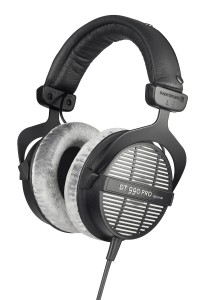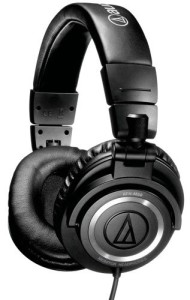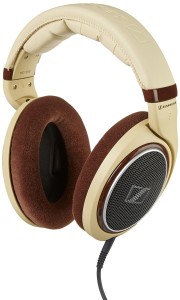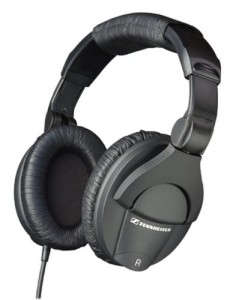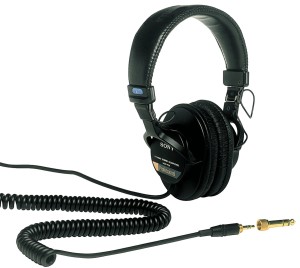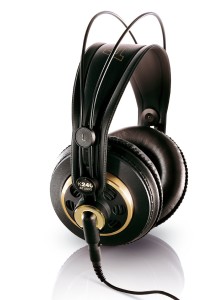It’s a common knowledge that you should not mixing or mastering using a headphone due to many reasons. But if treating your room’s acoustic is not an option, then a good headphone is better than a pair of speaker + untreated room combo. Here’s our recommendation of best headphones for mixing under $200.
Beyerdynamic DT-990-Pro-250
Cheaper option of the reputable German headphone renowned for their legendary build found in many top broadcasting and recording studios. DT-990 have an open-back design and have a more V shaped sound signature compared with the more analytical semi-open DT-880, and more neutral closed-back DT-770. All these beyers are known to be extremely comfortable for a long mixing session thanks to its soft velour ear pads (bye bye sweaty ears).
Open-back design means the sound can leak to a person next to you, thus won’t be suitable for recording vocals, but for mixing it won’t matter. The V shaped frequency on the DT-990 may turn down some people, but it’s still considerably neutral and reliable to work. Consider this as the funner version of the Beyers! They come with different ohm rates (different pricing, and slightly different models other than ohm) which some audiophile folks may comment on the sonic difference of each. The Pro version means it have more clamping power on your head, thus increasing perceived bass and narrower soundstage.
Audio-Technica ATH-M50
Recommended by soooo… many people due to it’s comfortable design, and really great sound reproduction at a moderate price. With a gently scooped sound signature with a slight emphasis on low and mid-high region, this has made ATH-M50 a popular studio choice. Being a professional studio series, the lower-end series like ATH-M40, M30, and M20 also shares similar sound signature which is satisfying at their price points, although with a compensation on comfort, build quality, and fatigue levels across the series.
Some says that ATH-M50 is too nice sounding even makes everything pretty much sounds good through them; which is considered bad for a mixing reference headphone. We don’t think this is a drawback though, if you are after a good-loking, a wide soundstage for a closed-back design, comfortable, and great sound which is still balanced across the spectrum, ATH-M50 is a good choice. After all, sound and comfort level is always be a number 1 factor for an extended mixing sessions, and you always need to double, triple-check your mixes for consistency on another sources even on a standard car audio or stock iPhone buds.
Sennheiser HD 598
Judging by the look, it’s unprofessional looking and should be targeted toward Audiophile fanatic who only listen to nothing but uncompressed , “recorded in HD” junkies who praise nothing but Susan Wong while sitting on their antique leather couch.
Yes, it might sounds too colored and less revealing than the other. But on that price point, you have unrivaled comfort, and neutral sound signature which can be comfortable in a long mixing session. The soft velour pads and leather pads on the headband are said to be very comfortable.
The sound signature is warm, detailed, and well extended. Perfect for you who opt for an open-back design, and wanted to upgrade from HD 280 Pro and still wanted to go Sennheiser, but the budget is limited below the more expensive (yet better sounding) HD-600 or HD-650.
Sennheiser HD-280 Pro
From a quick stroll in the Gearslutz forum, this headphone is the second most recommended by many after ATH-M50. Some even says that it’s the less comfortable, poorman version of the widely acclaimed Sennheiser HD-600 which is about 3,5 times more expensive. The design is closed-back (this means it works well for a recording session with your vocalist), detailed and revealing sound signature, with a really good bass response.
Rated at 32 ohms, HD-280 pro is compatible with many portable sources as well where output is less than ideal; from your laptop’s headphone output, to iPods, iPhone, iPad, MP3 players, android phones, etc. The other factor to consider is their ability to isolate outside noise really well.
Sony MDR7506
Due to it’s clarity, rugged design, and good isolation. Many people recommend this for a mixing purpose, although more towards live engineer situation. MDR7506 is a more expensive spin-off from the classic MDR-V6 which has survived 30 years of existence as a studio workhorse (there’s should be a reason for that length of existence).
The sound signature is bass-light and more towards bright and clear to emphasize the high-definition clarity of audio source, which some people, especially vocalists, find this useful to control their vocals during a recording.
For mixing, there’s a high chance that you come out with a dull, bassy mixing (compared on other system) due to its hyped highs. But it’s clarity can really helpful to find noise, pops, clicks, sibilance, or getting a right amount of reverb tails. Still great if you want an affordable workhorse, and the sound signature suit your taste.
AKG K240
Being the cheapest of all the other alternative compared in this article, many still prefer this over the Sony MDR7506 or Sennheiser HD-280Pro. Although a “Made in China” label may be a turn off for some, it may explain the lower price tag it has. Many people consider AKG K240 to be more neutral, honest, less boxy, and no frills option compared with the Sony MDR7506 or Sennheiser HD-280 Pro within the similar price range, hence making this more suitable option for mixing. It also have a detachable cable which can be important decision factor for many who loves durability and flexibility.
Most people put high regards on how loud this can be driven, and a small leakage it has. Making it also best to tracking drums, or vocals.


